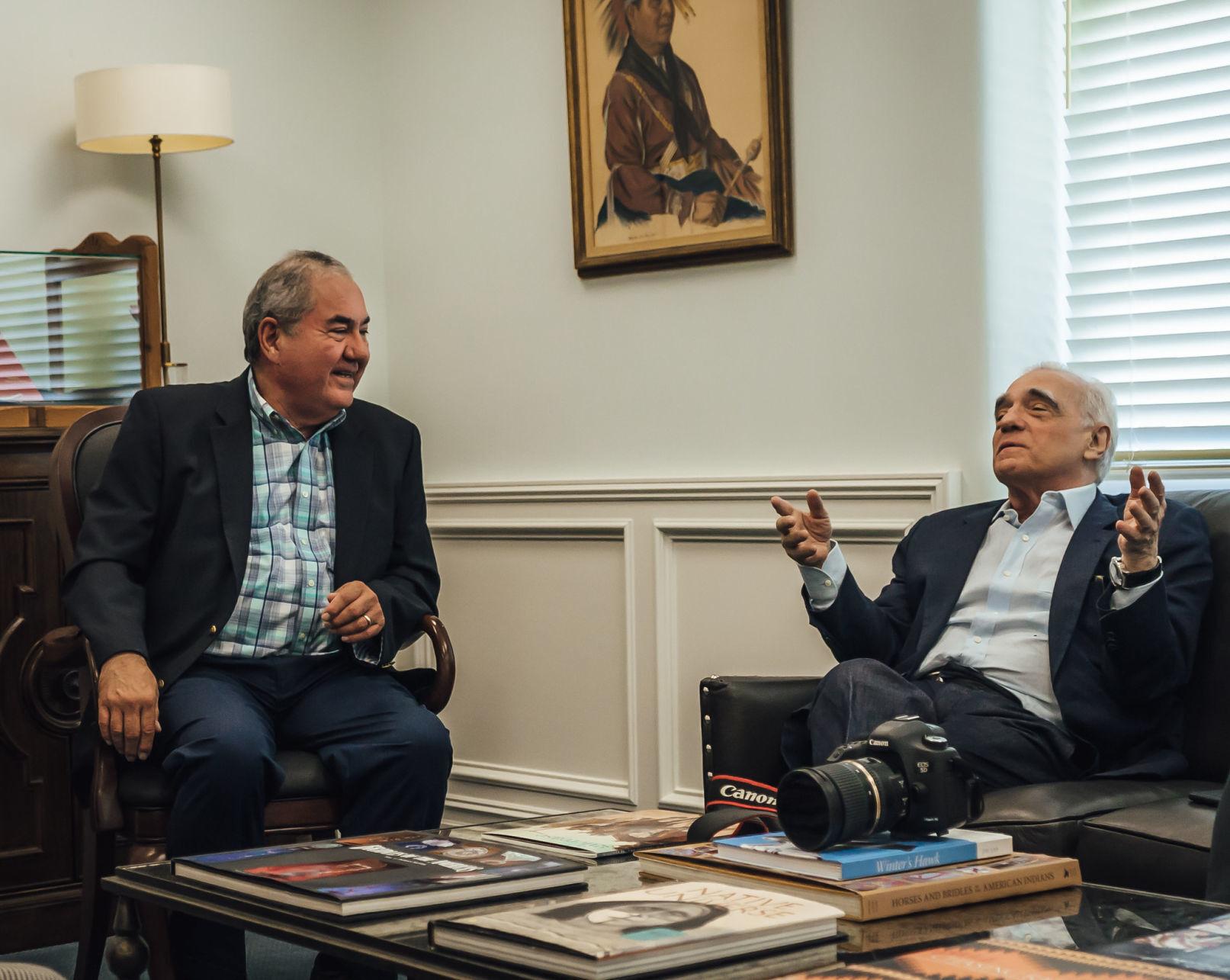
- Details
- By Native News Online Staff
OSAGE NATION — With funding in place, “Killers of The Flower Moon,” an upcoming film centered on the decades-old Osage Nation murder cases, is set to begin filming next February near Pawhuska, Okla., home of the Osage Nation.
The announcement was made during Principal Chief Geoffrey Standing Bear’s report during the Seventh Osage Nation Congress on Wednesday. Standing Bear was musing about the need for an Osage Nation Museum expansion and remodel when he let slip a tiny detail about the feature film being directed by Academy Award-winning Martin Scorsese, according to the Osage News, the official newspaper of the Osage Nation.
“My latest information is that they would start filming, subject to Coronavirus, February 2021,” Standing Bear said. “And, they will be here for about 16 weeks. They’re going to start moving in here quietly, I’m not helping that very much, but quietly around November and December. So, they’re coming.”
The early arrivals will construct movie sets in either November or December. Actual filming will not start until February 2021.
“Killers of the Flower Moon,” which is based on a 2017 book by author and journalist David Grann, is tentatively set for a 2021 release and recounts the story of Osage Nation members who were murdered under mysterious circumstances in the 1920s. The killings sparked a landmark FBI investigation involving J. Edgar Hoover.

Academy Award winners Leonardo DiCaprio and Robert De Niro have been announced as playing central roles in the film.
Funding was set in May 2020 for the film when Apple agreed to finance the project as one of its original films. Paramount will still distribute the film theatrically worldwide.
Scorsese’s last movie, “The Irishman,” was distributed through Netflix and scored a handful of Academy Award nominations. While it saw a limited run in theaters, it’s main distribution came from streaming on Netflix.
More Stories Like This
A Native American Heritage Month Playlist You Can Listen to All Year Long11 Native Actors You Should Know
Five Native American Films You Should Watch This Thanksgiving Weekend
Heavy metal is healing teens on the Blackfeet Nation
Over 150 Tribal Museums Participate in Fourth Annual Celebration of Native Life
Help us tell the stories that could save Native languages and food traditions
At a critical moment for Indian Country, Native News Online is embarking on our most ambitious reporting project yet: "Cultivating Culture," a three-year investigation into two forces shaping Native community survival—food sovereignty and language revitalization.
The devastating impact of COVID-19 accelerated the loss of Native elders and with them, irreplaceable cultural knowledge. Yet across tribal communities, innovative leaders are fighting back, reclaiming traditional food systems and breathing new life into Native languages. These aren't just cultural preservation efforts—they're powerful pathways to community health, healing, and resilience.
Our dedicated reporting team will spend three years documenting these stories through on-the-ground reporting in 18 tribal communities, producing over 200 in-depth stories, 18 podcast episodes, and multimedia content that amplifies Indigenous voices. We'll show policymakers, funders, and allies how cultural restoration directly impacts physical and mental wellness while celebrating successful models of sovereignty and self-determination.
This isn't corporate media parachuting into Indian Country for a quick story. This is sustained, relationship-based journalism by Native reporters who understand these communities. It's "Warrior Journalism"—fearless reporting that serves the 5.5 million readers who depend on us for news that mainstream media often ignores.
We need your help right now. While we've secured partial funding, we're still $450,000 short of our three-year budget. Our immediate goal is $25,000 this month to keep this critical work moving forward—funding reporter salaries, travel to remote communities, photography, and the deep reporting these stories deserve.
Every dollar directly supports Indigenous journalists telling Indigenous stories. Whether it's $5 or $50, your contribution ensures these vital narratives of resilience, innovation, and hope don't disappear into silence.
 The stakes couldn't be higher. Native languages are being lost at an alarming rate. Food insecurity plagues many tribal communities. But solutions are emerging, and these stories need to be told.
The stakes couldn't be higher. Native languages are being lost at an alarming rate. Food insecurity plagues many tribal communities. But solutions are emerging, and these stories need to be told.
Support independent Native journalism. Fund the stories that matter.
Levi Rickert (Potawatomi), Editor & Publisher

